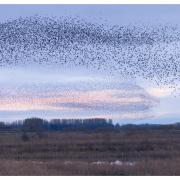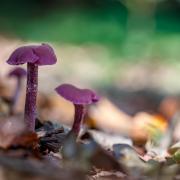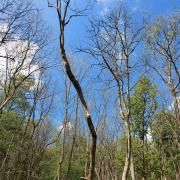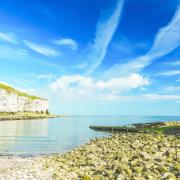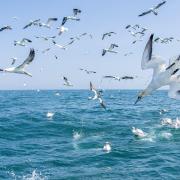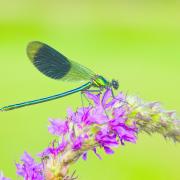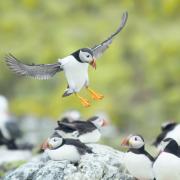With its breathtaking colours and fantastic wildlife displays, autumn is the perfect time to pull your boots on and head outdoors, says Hetti Lawrence from Yorkshire Wildlife Trust.

Down at your feet…
From down at your feet to up in the skies, Yorkshire's autumn landscapes are full of colour, noise and life. One of the best places to immerse yourself in all the best sights, sounds and smells of autumn is in a woodland. There's nothing quite like hearing that 'crunch' of leaves underfoot on a crisp day, or seeing such an array of autumn colours - the golden yellow of the field maple, the bronze of the common beech, the fiery orange of the oak, the warm red of the rowan. Moorlands near York and Low Wood near Keighley are two of our best woodland nature reserves for autumn wanderings.
Foraging in fallen leaves is a perfect activity for families, as autumn is a great time to explore the different shapes, sizes and colours of all the different trees. Foraging on the forest floor may also reveal some hidden fungi. Children and adults will most likely recognise the fairytale fly agaric from storybooks, as its pretty red colour with white spots make it the quintessential woodland toadstool (look out for it at the base of birch trees). But Yorkshire is home to a myriad of other magical mushrooms, from the bioluminescent candlesnuff fungus (grows on dead and rotting wood) to the striking purple amethyst deceiver (grows in broadleaved and coniferous woodlands). If you don't know your scarlet elfcups from your turkeytails, make sure to just look and don't touch as some fungi are poisonous.

Eye to eye…
Its always a special moment when you're walking through the countryside looking around, and suddenly you see a large pair of eyes staring back at you through the trees! In a county largely devoid of large mammals, seeing a deer in the wild still evokes a bit of a wildlife thrill. Most of the time, deer are incredibly shy creatures, so if you're lucky enough to spot one in a silent woodland it will most likely already be bolting away. But in autumn it's a different story: October brings the deer 'rutting' season, when male deer get a burst of testosterone prior to mating and compete with other males in vocal and physical fights. Both fallow and red deer rut in the autumn, and both can be viewed in certain parts of Yorkshire.
As the largest species, red deer put on the best rutting show. Stags will begin the fight vocally, so unlike other times of year you may hear a deer before you see one. If a loud, vocal display isn't enough to ward off a rival, stags will parallel-walk before finally locking antlers. This is a thrilling but unpredictable display so always keep your distance. Ruts usually take place just after dawn and/or just before dusk, so be prepared to arrive early and stay late.

Look up high…
With all that excitement going on across the forest floor and eye-to-eye through the trees, don't forget to cast your eyes to the skies for one of the season's most rewarding displays: the autumn bird migration.
Visit Spurn National Nature Reserve for some spectacular seawatching. Thousands of auks, kittiwakes and gannets leave their colonies and head out into the North Atlantic for the winter; search through flocks of Manx shearwater for their rarer cousins, including Balearic, great and Cory's shearwaters.
In October, it's the turn of thrushes, finches and buntings to make the journey across the North Sea to the UK. If the conditions are right, spectacular movements can occur involving thousands of birds. It's a delight for the senses, vast clouds of finches and thrushes passing overhead in endless flocks, accompanied by the nasal croak of bramblings, the laughing rattle of fieldfares and the piercing call of redwings. In foggy or rainy conditions, these birds can be grounded in an event known as a 'fall', where birds seem to cover the ground and any vegetation. On one such October day in 2012, observers at Spurn recorded over 38,000 birds!
October also sees the return of thousands of swans and gees to our wetland areas, flying in their famous V-formations. Wheldrake Ings and Ripon City Wetlands nature reserves are perfect places to see the numbers arrive, and you can watch quietly and safely from our many strategically placed hides. And one of the greatest autumn sky displays is the famous starling murmurations, when flocks of thousands of starlings dance through the dusk sky. Contracting and expanding as one flock merges into another, the murmuration takes on a life of its own, swirling back and forth in ever more complex and beautiful patterns.












